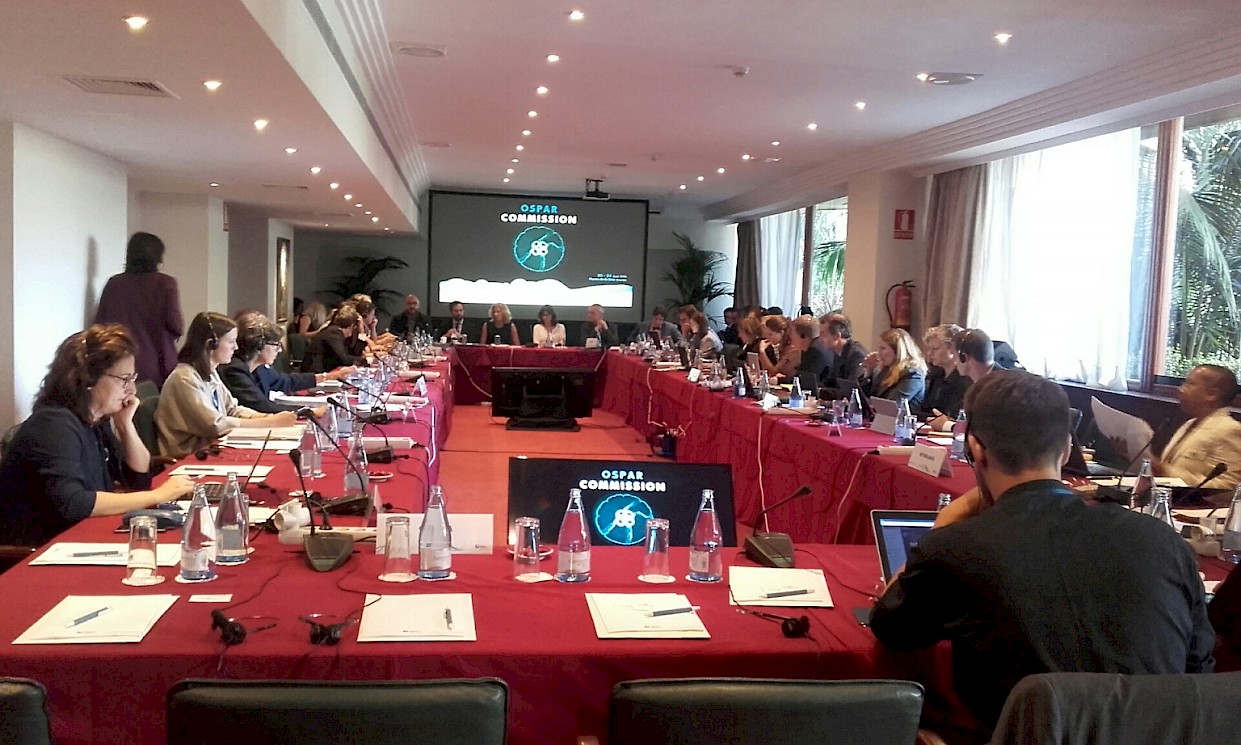OSPAR Commission meets in Tenerife
Marine Policy makers from around Europe gathered in Tenerife for the annual meeting of the OSPAR Commission for the protection of the marine environment of the North-East Atlantic.
OSPAR welcomed the finalisation of its latest evaluation of progress towards its Radioactive Substance Strategy. The report shows that, thanks to international cooperation through the Convention, OSPAR Contracting Parties have achieved substantial reductions in discharges from the nuclear sector.
A further key step in protecting the North-East Atlantic was the adoption of measures to protect and conserve a further species and habitat identified by OSPAR as being particularly vulnerable within the North-East Atlantic. The Atlantic Salmon (in cooperation with the North Atlantic Salmon Conservation Organisation) and intertidal mudflats both saw their protection extended.
Following a busy week of discussions OSPAR also announced that 10 new Marine Protected Areas had been added to its network this year bringing the total to 423. OSPAR also furthered the international effort to reduce marine litter with the creation a Fishing for Litter network across the North-East Atlantic which will allow vessels to land waste in any of over 40 harbours involved. Further notable success in the fight against marine litter saw OSPAR agree to tackle sources of micro plastic pollution to the marine environment.
Outgoing Chairman, Mr Victor Escobar (Spain), said that OSPAR delegates should “take time to celebrate the successes of the Commission” before going on to remind delegates that they should “…be proud of the solid foundation of intergovernmental trust and cooperation for which the OSPAR Commission is known”. He then reminded delegates that continued cooperation was vital to the health of the North-East Atlantic, but that only by strengthening commitment and developing ambitious visions to protect the marine environment can progress be made.
ENDS

Note for editors
- The OSPAR Commission was set up by the 1992 OSPAR Convention for the Protection of the Marine Environment of the North-East Atlantic, which unified and updated the 1972 Oslo and 1974 Paris Conventions. It brings together the governments of Belgium, Denmark, Finland, France, Germany, Iceland, Ireland, Luxembourg, the Netherlands, Norway, Portugal, Spain, Sweden, Switzerland and the United Kingdom, together with the European Community.
2. More than 30 international non-governmental organisations are involved in OSPAR as official Observers. They represent a broad range of interests and expertise related to the marine environment and the uses of marine resources. Many contribute information, insights and standpoints. This is much appreciated feedback from civil society and the economy. The OSPAR Commission greatly values these partnerships that help inform its decisions and other results. (See list on OSPAR website at http://www.ospar.org/organisation/observers)
3. The 2 marine habitats and species protected in these recommendations bring the total list to 38 species and 16 habitats including those agreed at previous OSPAR meetings (http://www.ospar.org/work-areas/bdc/species-habitats/list-of-threatened-declining-species-habitats).
4. Fishing for Litter is an initiative started in the Netherlands before being expanded to the UK Scotland in 2005. It is managed by KIMO International (http://www.kimointernational.org/FishingforLitter.aspx). The Initiative is designed to reduce the amount of marine litter in our seas by providing participating fishing vessels with hard wearing bags to collect marine litter that is caught in their nets as part of normal fishing activities. In 2014 OSPAR published an Overview and assessment of implementation reports on Fishing for Litter.
5. The OSPAR Commission’s strategic objective with regard to radioactive substances is to prevent pollution of the of the OSPAR Maritime Area from ionising radiation through progressive and substantial reductions of discharges, emissions and losses of radioactive substances, with the ultimate aim of concentrations in the marine environment near background values for naturally occurring radioactive substances and close to zero for artificial radioactive substances. In implementing the OSPAR Radioactive Substances Strategy, the OSPAR’s Radioactive Substances Committee carries out periodic evaluations of progress. The fourth such evaluation was agreed for publication at OSPAR 2016 (http://www.ospar.org/documents?d=35337).
6. The OSPAR Biological Diversity and Ecosystems Strategy sets out that the OSPAR Commission will assess which species and habitats need to be protected. This OSPAR List of Threatened and/or Declining Species and Habitats (http://www.ospar.org/work-areas/bdc/species-habitats/list-of-threatened-declining-species-habitats) has been developed to fulfil this commitment. It is based upon nominations by Contracting Parties and observers to the Commission of species and habitats that they consider to be priorities for protection.
